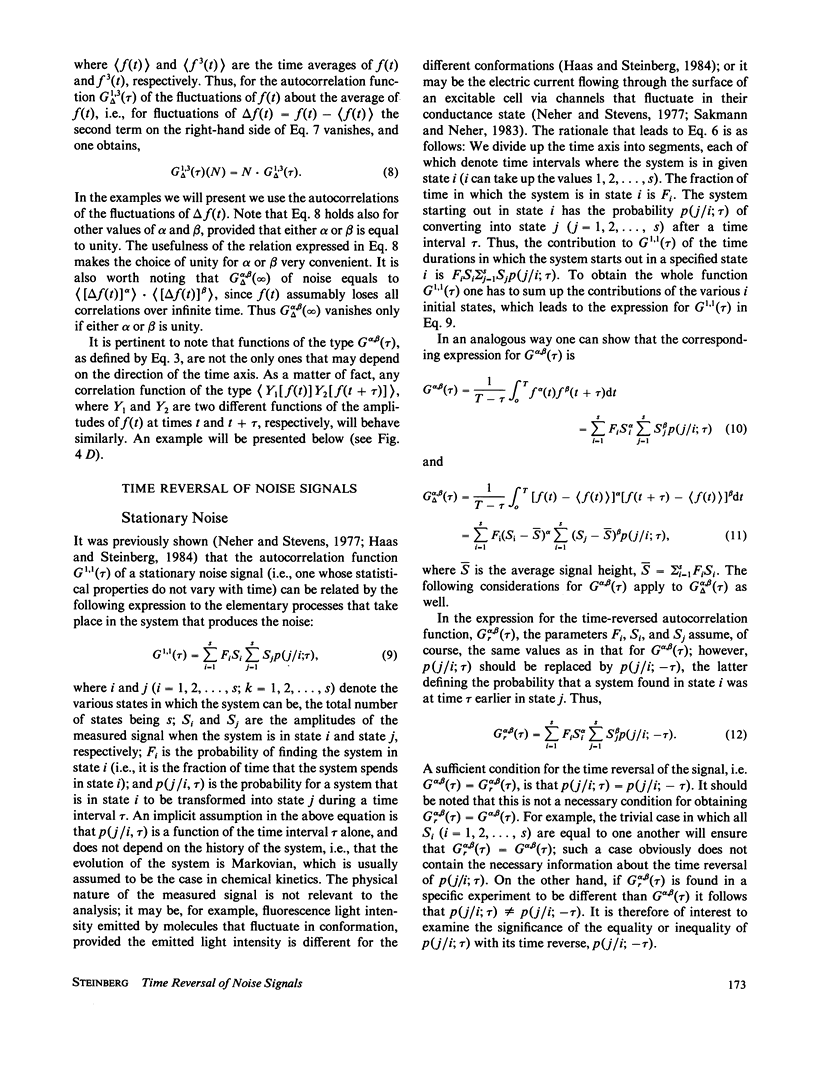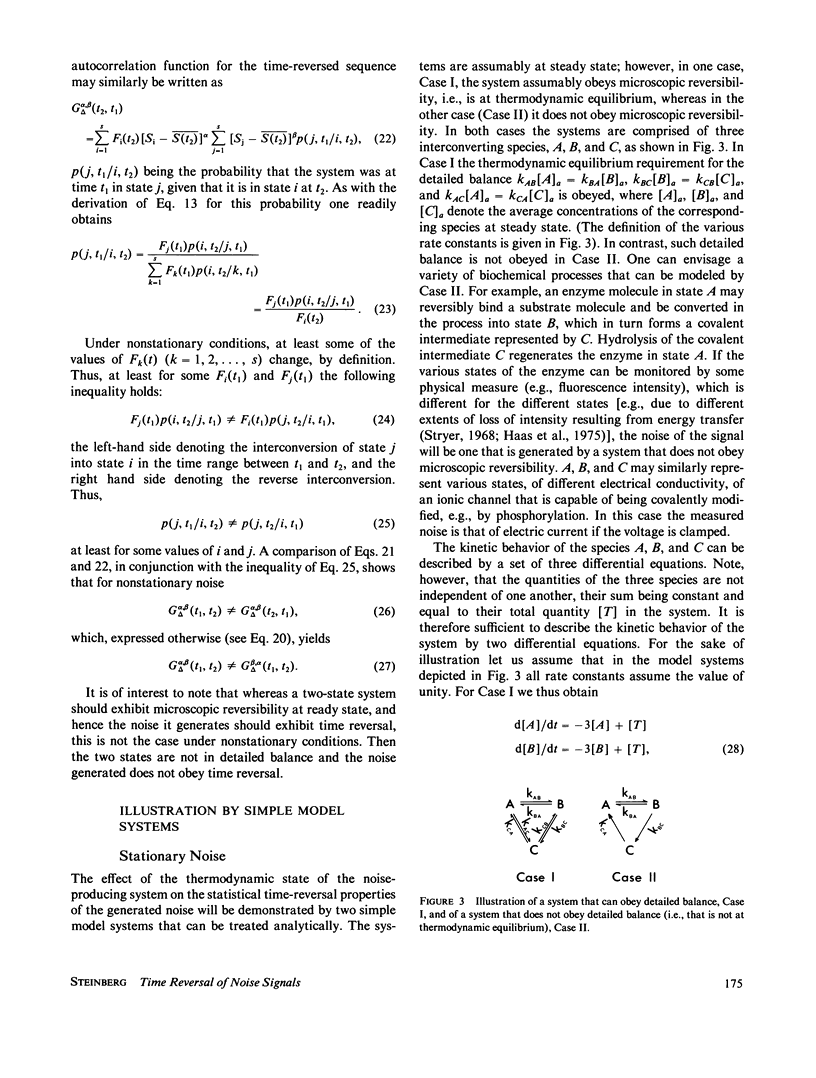Abstract
This paper addresses the question of whether, and under what conditions, a noise trace changes its statistical properties when the time axis is reversed in direction. The autocorrelation function of the noise or its power spectrum cannot be used to identify the directionality of time in a noise signal since both are always the same for the signal and for its time reverse, regardless of the characteristics of the noise. However, the autocorrelation function can be generalized to represent the average of the products of powers of the signal at pairs of time instances separated by a given interval. If the powers are not the same for the first and second time instances, the generalized autocorrelation function can detect whether the statistical properties of a noise signal change upon the reversal of the direction of the time axis. We show that noise generated by systems that obey microscopic reversibility, i.e., that are at thermodynamic equilibrium, show the same statistical properties when evaluated forward and backward in time. A noise signal that does not demonstrate such time-reversal behavior discloses that the system that generates it is not at thermodynamic equilibrium. Several model examples are presented for illustration.
Full text
PDF








Selected References
These references are in PubMed. This may not be the complete list of references from this article.
- Conti F., Neumcke B., Nonner W., Stämpfli R. Conductance fluctuations from the inactivation process of sodium channels in myelinated nerve fibres. J Physiol. 1980 Nov;308:217–239. doi: 10.1113/jphysiol.1980.sp013469. [DOI] [PMC free article] [PubMed] [Google Scholar]
- Haas E., Steinberg I. Z. Intramolecular dynamics of chain molecules monitored by fluctuations in efficiency of excitation energy transfer. A theoretical study. Biophys J. 1984 Oct;46(4):429–437. doi: 10.1016/S0006-3495(84)84040-0. [DOI] [PMC free article] [PubMed] [Google Scholar]
- Haas E., Wilchek M., Katchalski-Katzir E., Steinberg I. Z. Distribution of end-to-end distances of oligopeptides in solution as estimated by energy transfer. Proc Natl Acad Sci U S A. 1975 May;72(5):1807–1811. doi: 10.1073/pnas.72.5.1807. [DOI] [PMC free article] [PubMed] [Google Scholar]
- Hamill O. P., Sakmann B. Multiple conductance states of single acetylcholine receptor channels in embryonic muscle cells. Nature. 1981 Dec 3;294(5840):462–464. doi: 10.1038/294462a0. [DOI] [PubMed] [Google Scholar]
- Hess P., Tsien R. W. Mechanism of ion permeation through calcium channels. 1984 May 31-Jun 6Nature. 309(5967):453–456. doi: 10.1038/309453a0. [DOI] [PubMed] [Google Scholar]
- Labarca P. P., Miller C. A K+-selective, three-state channel from fragmented sarcoplasmic reticulum of frog leg muscle. J Membr Biol. 1981;61(1):31–38. doi: 10.1007/BF01870750. [DOI] [PubMed] [Google Scholar]
- Latorre R., Alvarez O. Voltage-dependent channels in planar lipid bilayer membranes. Physiol Rev. 1981 Jan;61(1):77–150. doi: 10.1152/physrev.1981.61.1.77. [DOI] [PubMed] [Google Scholar]
- Neher E., Stevens C. F. Conductance fluctuations and ionic pores in membranes. Annu Rev Biophys Bioeng. 1977;6:345–381. doi: 10.1146/annurev.bb.06.060177.002021. [DOI] [PubMed] [Google Scholar]
- Sigworth F. J. Covariance of nonstationary sodium current fluctuations at the node of Ranvier. Biophys J. 1981 Apr;34(1):111–133. doi: 10.1016/S0006-3495(81)84840-0. [DOI] [PMC free article] [PubMed] [Google Scholar]
- Sigworth F. J. Interpreting power spectra from nonstationary membrane current fluctuations. Biophys J. 1981 Aug;35(2):289–300. doi: 10.1016/S0006-3495(81)84790-X. [DOI] [PMC free article] [PubMed] [Google Scholar]
- Sigworth F. J. The variance of sodium current fluctuations at the node of Ranvier. J Physiol. 1980 Oct;307:97–129. doi: 10.1113/jphysiol.1980.sp013426. [DOI] [PMC free article] [PubMed] [Google Scholar]
- Stryer L. Fluorescence spectroscopy of proteins. Science. 1968 Nov 1;162(3853):526–533. doi: 10.1126/science.162.3853.526. [DOI] [PubMed] [Google Scholar]


